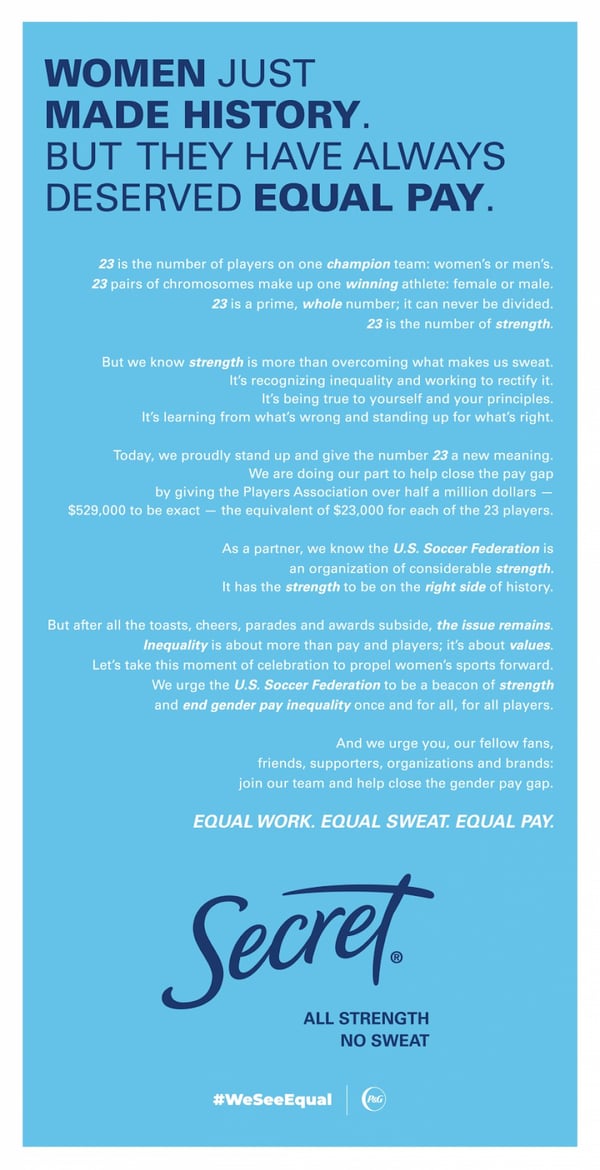A recent publication of the Sunday New York Times had six different full-page print ads from big-name companies like Mastercard, Campbell’s, Olay, and others.
As many of you have probably heard in the past, print — and especially print advertising — is supposed to be dead (though it’s not technically ad dead as we’re all told). But still, what’s causing this semi resurgence from major brands over the past couple of months?
With coronavirus and America’s issues with racism and inequality taking over the news, brands have decided to turn back to full-page and even full-text ads to reach their audience.
Why companies are choosing print
A majority of these full page ads are focused on showing how the brand is making changes to better itself or how it will attempt to rectify past mistakes.
The companies are choosing to use a more permanent medium to really showcase their stance rather than relying solely on a fleeting digital ad or quick ad spot on a streaming platform.
While these companies are going back to an “old” way of advertising, it’s not necessarily the same way they advertised many years ago with print.
The ads that made an appearance in the Sunday edition of the Times are statements on how the brand is going to better support equality. Not urging the reader to purchase a product or service as a typical ad would, but rather stating the brand's values.
They’re showing you what they believe in and are hoping you share the same beliefs as them — or if you see the ad and are a fan of the brand that you’ll revisit your values.
A couple of examples of these types of ads include an ad from last year from Secret deodorant calling for gender equality (below), and MasterCard placing a two-page ad committing to equal treatment, equal opportunity, and equal rights.

Here, Secret commits to help close the pay gap for the U.S. women's national soccer team. Secret wants those who purchase from them to know where the company stands, especially when it comes to equal pay.
Brands like this believe that they need more than their typical Twitter character limit or 15 to 30-second ad spots to show where they stand and what they are doing to combat inequality.
An advertisement for values is still an advertisement
While Secret or many of the other companies who take out print ads are not directly advertising for customers to purchase, they are selling what they believe in as a company.
By doing this they’re hoping to win customer allegiance and broaden their customer base among those shopper who put emphasis on company values.
Winning a customer with values often means winning a customer for life.
At least, that’s the gamble.
Medium matters
As protests and debate rages and our country’s citizens seek to educate themselves and better understand the issues, many will choose (or choose not) to patronize certain brands who align with their values.
At times like this, staying silent is a statement in and of itself.
If your company is looking to take a stronger stance or you don’t feel that your message is being heard, then a long-form print ad may be right for your company.
It doesn’t need to be shared in the New York Times or a national newspaper. For example, if you’re a local restaurant that wants to advertise your values, you could print an ad in your local newspaper to amplify your message to current and potential customers.
Based on the response these ads got from the New York Times audience it seems that these full-page print ads are a revered and effective way to help audiences understand what your company is trying to do and how you’re working to help achieve equality — not only at your company but within the country as well.
So, don’t be afraid to give print advertising a try if you’re looking to make a bigger impact with your message, especially if that message transcends your products or services.
from The IMPACT Blog https://ift.tt/2CVjtiA
via IFTTT
Comments
Post a Comment